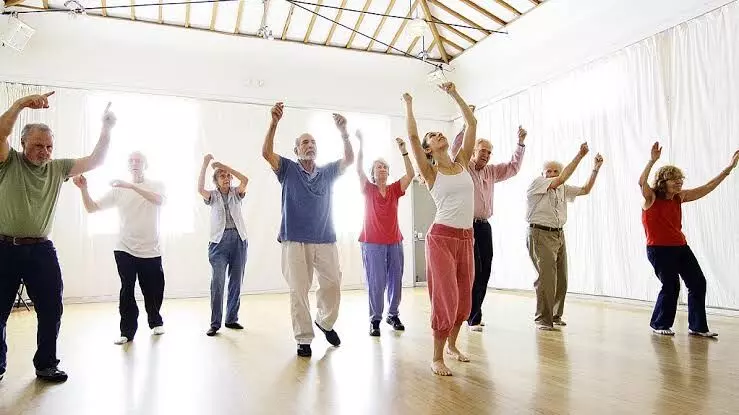World Parkinson’s Day: How dance and music therapies help patients move and heal
Parkinson’s is a progressive neurodegenerative disorder primarily impacting the brain’s dopamine-producing neurons
By Anoushka Caroline Williams
World Parkinson’s Day: How dance and music therapies help patients move and heal
Hyderabad: World Parkinson’s Day, observed on April 11, shines a spotlight on a neurological condition that affects over 10 million people worldwide.
While traditional treatments like medication and physiotherapy remain central, a growing body of research supports dance and music-based therapies as effective, evidence-backed interventions for improving motor skills and emotional well-being in people with Parkinson’s disease (PD).
Parkinson’s patients have trouble managing rhythm
Parkinson’s is a progressive neurodegenerative disorder primarily impacting the brain’s dopamine-producing neurons. This loss results in motor symptoms such as tremors, rigidity, bradykinesia (slowness of movement) and postural instability.
Dr Mitali Raghavan, a neurologist speaking to NewsMeter, explained that one of the core challenges Parkinson’s patients face is rhythm. Their natural ability to move smoothly and automatically is compromised. That’s where music and dance come in—these external rhythmic cues can help restore that flow.”
Why dance? The science behind rhythmic movement
Structured dance programs—such as tango, ballet and even contemporary movement—are increasingly being used in Parkinson’s rehabilitation programs. These sessions are not recreational add-ons; they are built on neurological principles.
When someone with Parkinson’s listens to rhythmic music, the brain’s auditory pathways can activate motor regions, essentially bypassing some of the faulty internal timing mechanisms.
A 2022 study in Frontiers in Neurology found that dance sessions improved gait, balance and coordination in people with PD over a 12-week period. Notably, participants also reported reduced fear of falling and better social engagement.
The role of music therapy
Music therapy in Parkinson’s often involves rhythmic auditory stimulation (RAS), where beats or patterns are used to guide walking pace or hand movements.
“Music provides an external clock for the body,” said Anirban Sen, a certified music therapist who works with neurodegenerative patients. “If a person struggles to initiate walking, a steady beat—especially one slightly faster than their natural pace—can trigger movement and even improve stride length over time.”
Moreover, music activates emotional and memory centres in the brain, offering therapeutic benefits beyond movement, including stress relief and improved mood.
Benefits for memory, recovering sequencing and attention
Beyond movement, dance and music offer cognitive stimulation—requiring memory, sequencing, and attention. In group settings, they also create social interaction, which many people with Parkinson’s struggle to maintain due to mobility and speech issues.
Ankita Sharma, a physiotherapist, noted that “Participants not only learn steps they build routines, engage with partners and communicate through expression. These elements help reinforce brain circuits that support both motor and non-motor functions.”
Global and local initiatives
Internationally, the Dance for PD program, founded in Brooklyn, has inspired adaptations in over 25 countries. In India, several NGOs and rehabilitation centres have introduced culturally adapted versions using classical and folk music.
Programs are usually led by trained professionals with input from neurologists and physiotherapists. Some even combine dance with yoga, vocal exercises or storytelling.
Challenges and accessibility
While the benefits are clear, access remains an issue. Many patients live in areas without specialised centres or lack awareness of alternative therapies.
“There is still a perception that dance or music is ‘extra’—not part of real treatment,” said Dr Raghavan. “But evidence shows these activities work at the level of the nervous system. They deserve integration, not marginalization.”
Moving forward: Integration into mainstream care
Experts advocate for multidisciplinary care models that include neurologists, physical therapists, music and dance therapists and mental health professionals.
Teletherapy and online dance classes are beginning to bridge the accessibility gap. Several platforms now offer guided movement sessions specifically for Parkinson’s, with modifications for all ability levels.
As research deepens and patient stories amplify the impact, dance and music are moving from the periphery to the core of Parkinson’s care. More than just alternative therapy, they represent a scientific and human-centred approach to helping patients reconnect with their bodies—step by step, beat by beat.